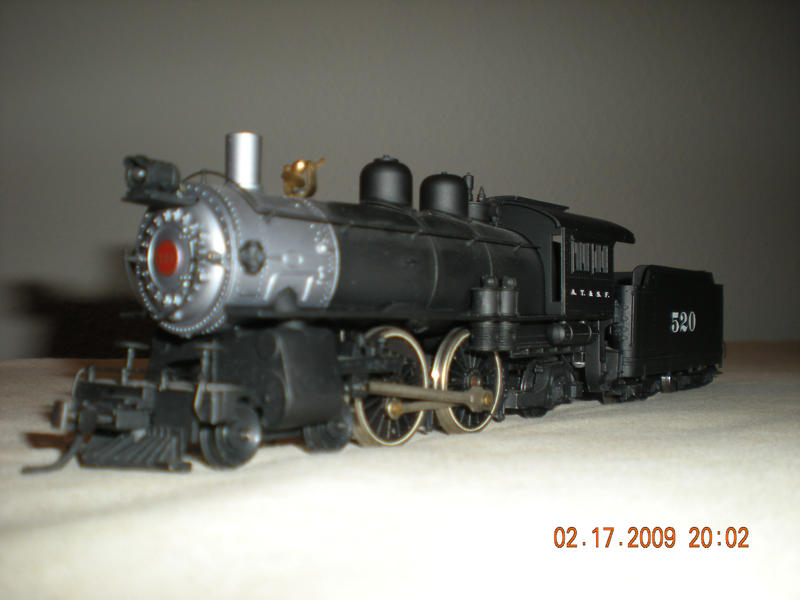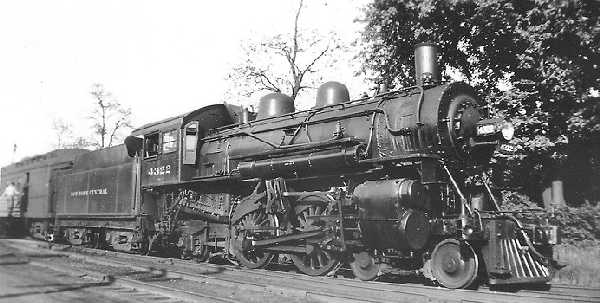The initial idea was to add detail to this crude example of a 2 rail Atlantic. Certainly, it must have been based on something built in the early part of the last century, but a search of most known American made 4-4-2's revealed it actually contains features from any number of them. So , instead of changing numerous details so that it resembled a particular prototype, I figured reworking the drivetrain by adding a can motor would make for a nice weekend project. That was 2 weekends ago.
Under the hood, with the old open frame DC motor removed, it was very simple to fit a floating U joint from a Legacy F unit power truck onto the existing old worm gear shaft. Filing 2 flat surfaces onto the shaft allowed the U joint to drop right on.
That was the last simple job. From here on in it has been a lot of trial and error, plus a total goal change. Fiddling with motor mount arrangements ended up proving that the simplest was the best. The idler arm arrangement that utilized one ear of the F unit can motor mount turned out to cause more running issues than without it. This was discovered only after I had slotted the bottom of the boiler to accommodate it. I fashioned a fire grate bottom, just in case a firebox light was installed later.
The motor installed, before the idler arm removal
Here's where directions changed. After putzing with motor mount design, it was found to be a smooth runner at slow speeds, Happy with the results, I decided to 3 rail it. First line of attack was a wiring harness, in particular, a tether between loco and tender. A recent refit of an MTH ABA set left me with 2, 4 wire tethers, which I was able to couple together. More on the need for 8 wires later. Here's the female ends mounted to the lower rear frame
And the outside view with both male ends ganged together. An L bracket was added to give strength to the weakened back frame due to notching
The step plate on the front of the tender never did align with the cab floor, and since I planned on adding a hinged plate between the two, raising the step plate allowed for more open space beneath for the tether to enter the tender. This one detail change ended up being a days work worth of desoldering the entire top of the tender and opening up the interior for future electronics installation. A number of brass details were added and improved upon, particularly at the rear of the tender.
the last 2 evenings were spent concocting a solid mounting of a center rail pickup on the loco. I had to lose the enormous lead weights and replace them with flat plates of zamac, to gain back some wieght and provide a higher surface for mounting the pickups. Again, a Legacy F unit roller set served the purpose here, albeit drastically shortened to fit between the pilot wheels and drive gear. I glued and screwed styrene stock to form an insulated mounting platform.
It's midnight now, and my pillow is calling.
Bruce














 I swapped the right angled steam tether for the straight affair from the diesel in hopes that a short drawbar could be kept. Too much rigidity from the short gap was encountered so I removed one half of the cobbled together 8 wire tether. A few wire swaps and eliminations inside the boiler ( don't need a chuff switch with PS1 ) and it was ready for a test run.
I swapped the right angled steam tether for the straight affair from the diesel in hopes that a short drawbar could be kept. Too much rigidity from the short gap was encountered so I removed one half of the cobbled together 8 wire tether. A few wire swaps and eliminations inside the boiler ( don't need a chuff switch with PS1 ) and it was ready for a test run. 